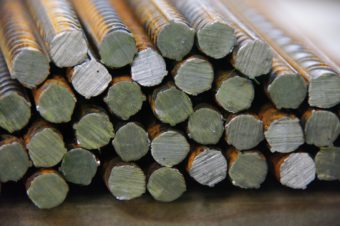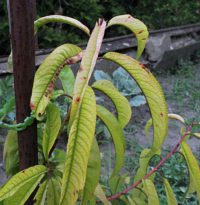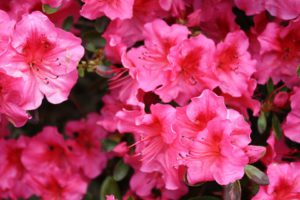Name of Product: Miracle-Gro Sulphate of Iron Plant Food
The Best Place to Buy: www.amazon.co.uk
Product Dimensions: 26.16cm x 18.03 x 7.11cm.
Shipping Weight: 1.56kg
My Ratings: 9/10.
In this article, we will be discussing why sulphate of iron is important for the gardener and the container garden in general. Plants can be difficult to look after; you give them the right fertilisers, the right amount of water and love and they reward you by the leaves looking sickly or they fail to bloom.

Do not worry, as the problem is not you but the availability of nutrients to the plant or plants in question. Once the nutrients become unlocked your plants will recover and display their beauty.
In past articles I have talked about a vast array of fertilisers, be it slow-release fertilizers, and fish, blood and bone. I have also reviewed Growmore, Phostrogen, Q4 fertilizer, Charge and others, but these fertilisers may not be suitable on their own if your plant likes acidic soil or has yellowing leaves. This is where the secret ingredient comes out for the gardener as acid-loving plants love the stuff.
WHY WOULD YOU WANT TO USE THIS PRODUCT?
Often when we have acid-loving plants in containers or the garden, they provide much welcome greenery throughout the growing season and beyond, where their colourful bloom can be admired.
When plants such as camellia, pieris, azaleas, rhododendrons, heathers, blueberries, cranberries etc, get the right fertiliser, they look wonderful. This is provided that the pH of the soil or compost is too high, as this will lock certain nutrients in and therefore become unavailable to the plants.
The result would be that once green leaves become yellow, which is not a pretty look. Eventually, if the problem is not treated quickly the leaves can drop.
The yellowing of the leaves is known as chlorosis and one way to solve this is to give the plants an iron tonic.
WHAT IS CHLOROSIS?

As said earlier in this article, chlorosis is when the leaves start turning an unsightly yellow colour that could eventually lead to the plant’s death. Normally in chlorosis, the whole leaves do not turn yellow, apart from the veins that remain green. Chlorosis is normally witnessed in new leaves but as the nutrient deficiency gets worst, older leaves will also be affected. As the conditions continue to worsen the leaves drop and growth is severely retarded.
HOW TO FIX CHLOROSIS CAUSED BY IRON DEFICIENCIES
In the soil, rarely is an iron deficiency caused by lack of iron in the soil. In fact, normally iron is found in abundance in normal garden soil, but several conditions at soil level can prevent your plants from absorbing the element.
There are four causes of iron chlorosis in acid-loving plants. These are
- Your soil pH is too alkaline, as your pH is too high.

Rhododendron can severely lack iron
- Your soil has too much clay in it.
- The soil is too wet or too compacted.
- Or the soil has too much phosphorous in it in the form of phosphates.
In the ground, iron may not be in short supply but if you have an acid-loving plant in a container, it certainly can be.
FIX THE SOIL pH
You need to test the pH of the soil (see my review of what soil testers to buy) and if it is greater than 7, you will need to alter the pH level. If this is the cause the plant ability to get iron is severely restricted, and this is where sulphate of iron comes into play. This is because this plant supplement naturally acidifies the soil, unlocking the nutrients available to the plant.
IF YOUR SOIL HAS TOO MUCH CLAY IN IT
Clay soil has a lot of silicates and aluminium based salts in them but not too much organic matter. First, these salts make the soil alkaline and the lack of organic material, make it difficult for the plants to get the available nutrients. To correct this, you need to work plenty of organic material such as compost into it and then mix it with sulphate of iron to help the process.
COMPACTED SOIL
If the soil is compacted or has too much moisture the roots cannot properly take up enough iron for the plant. If your soil is moist, you need to improve the drainage but this can be a difficult problem to deal with. Often the plant is large, access is too difficult and it cannot be forked around.
If you are unable to correct the drainage or severe compaction, you will need to correct this by the use of sulphate of iron as a soil supplement. The increased iron dosage should help the plant to be able to take up iron and other nutrients through the roots.
TOO MUCH PHOSPHOROUS
If by accident or by a natural build-up of this element, can cause the yellowing of leaves. To treat this, you need to use a fertilizer that is lower in phosphorous to help bring the soil back into balance and a good dose of sulphate of iron will help will this problem as well.
As you can see sulphate of iron is an important supplement to solve iron availability problems.
There is more, as sulphate if iron provides two important nutrients to the soil. You know about iron but it also contains sulphur, an important micronutrient.
Iron– This is an element for the development of photosynthesis in the production of chlorophyll.
Sulphur also helps in the production of chlorophyll, in root growth and how vigorous the plant grows, as well as how hardy the plant will be.
These two elements are important in the production of chlorophyll and the role sulphate of iron has in stopping the yellowing of leaves from starting.
PROS
- It will stop the yellowing of acid-loving plant leaves.
- Relatively inexpensive for the amount you get and use.
- A must for the container gardener who loves growing acid-loving plants.
CONS
- It can stain clothes and pathways, so do be careful when using it.
- When wet it can form a big, hard lump that is difficult to break up. It is advised to keep it dry at all times.
- Can be a serious irritant to your eyes, so it is advised to not use in windy conditions, where you will need to use eye protection whilst using it.
WHY SHOULD YOU BUY SULPHATE OF IRON?
I have been using sulphate of iron for many years and always had good results with it. I have a pieris and a camellia and it does very well as long as I apply it early spring each year.
If you want to avoid yellowing of leaves, you must be productive and use it to prevent chlorosis and not when the yellowing of leaves is observed. You may need to use it 2 to 3 times in the growing season but it works.
All you need to do is sprinkle a handful around each acid-loving plant every spring and once more in early summer to have a healthy plant.
I even use it for my pear tree, where a handful goes a long way in helping its production of fruit.
If you want to try this product, please do so here.
If you have any questions or comments that you wish to make, please do so in the comment box below.



A very useful review. Before I even finished reading I was sharing it with my wife. We are avid gardeners and enjoy planting anything from pine trees to potatoes. When a plant is not doing well we go right to the internet to see what may be the solution. Thank you for sharing, I think this will save several of our plants!
Hi Shawn
It is great to be of service. The internet is a great resource for finding solutions to problems faced in the garden. Hope you have bookmarked my website and keep coming back for more advice.
Thanks
Antonio
Hello there and thank you for the informative post. Unfortunately, I’ve been living in an apartment for the last few years and haven’t had the opportunity for gardening. Where I live the soil tends to be too acidic. The underlying bedrock is pyritic slate, and of course pyrite is iron sulphide. I wasn’t aware that sulphate of iron was an effective way to make soil nutrients available to plants. I was curious and did a bit more research on the topic. Apparently it is supposed to help get rid of moss. I was always under the impression that moss was an indicator of a soil with lower pH and applying granular lime was the prescribed treatment. Any comment you would care to share on that would be greatly appreciated.
Cheers,
David
Hi David
Sulphate of iron has two uses in the garden, as a fertiliser for acid loving plants to avoid yellowing of the leaves and as a moss killer in lawns. It does both jobs very well. The change of pH is dependent on the type of what type of plants you are growing, if they love a acidic soil then there is no point in changing the pH. Most plants love the pH between 5.5 and 7.0, but if your soil is too acidic you will need to add lime to bearing the pH up. Hope this clears this up. Sometimes products have multiple uses.
Thanks
Antonio
Thanks so much for sharing a beautiful, informative article with us. The principal element of this article is why gardeners use sulphate of iron. It’s really amazing that you covered this subject so well in your post. I have learned a lot from reading your post and gained a lot of knowledge about it. I like the pros of the sulphate of iron, points mentioned in your article.
I have a blueberry garden which is very beautiful and tidy.Suddenly one day I see its leaves have turned pale and then botanists advise me to use sulphate of iron. Later I realized that this was due to the high pH of the garden soil and after using this sulphate of iron it decreased and the blueberry leaves became the same as before. So I would say that those who see such problems in the garden can try using sulphate of iron which can solve your problem.
I’ve read your article and enjoyed it and I’d like to share it with my friends by posting it in the Facebook community so that everyone knows about your article and gets to know it.
Hi Asraful
I really enjoyed reading your blueberry story, as it brings home the fact the importance of freeing the ironninnthe soil so that the plant avoids getting iron chlorosis. People often forget about about feeding acid loving plants sulphate of iron so that those sickly yellow leaves are not on display. That is why I recommend it in the garden, as it is a quick acting tonic.
Thanks
Antonio